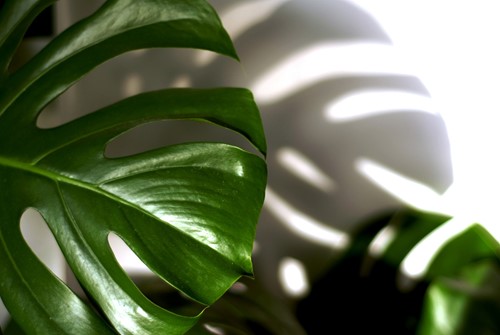
Caring for houseplants involves more than watering them. Even the most “unkillable” plants will benefit from extra care and attention. If your plants are surviving but not thriving, here are some tips to take your plant care to the next level:
Aerating the soil is a simple way to help your plants get more from their watering. It also promotes healthy roots and reduces your risk of decay. Before watering, use a pencil, chopstick or anything of a similar size and shape to poke holes in the soil around the plant. This will gently loosen up the soil and help the oxygen flow. When it’s time to water, the aerated soil will spread and absorb the water more efficiently, leading to a happier plant.
Many new plant owners are discouraged to find browning leaves or drooping stems in the first few days at home. For most plants, this is a sign of stress from a change in environment and they will recover in about a week. Keeping this behavior in mind is crucial for arranging more established plants in your home as well. If you need to move a plant from an area of low light to full sunshine, do so gradually so the plant has time to acclimate to the new conditions. You can do this by setting a “halfway” point between the original position and the new in order to find a happy medium for light and temperature.
Plants get most of what they need from water and photosynthesis, but still benefit from additional minerals found in fertilizers. Calcium, phosphorus, potassium and nitrogen are some of the most important nutrients fertilizers provide. Adding fertilizer, either by slow-release granules or liquid solution, will help promote new growth and keep the plants at their best. However, note that each plant has different fertilizer needs. Many do not require fertilizer at all during their dormant seasons, but thrive with frequent feeding in the spring. Check what your specific plant prefers to avoid overwhelming it.
Plants “feed” through the surface of their leaves, which means dust and other residue can hinder growth. To avoid this, you can gently clean the leaves with a damp cloth or dense cotton ball. The frequency of cleaning will depend on the environment and the specific plant, but giving the leaves a quick wipe every few weeks will keep them shiny and flourishing. If you notice white filmy residue after cleaning, try using distilled or rain water instead to avoid excess mineral build up from your tap water.
For plants to grow, their roots need to grow too. If you notice a plant has stopped growing, it might be time to move it to a larger pot. The other sign that a plant needs a bigger pot is roots poking out of the drainage holes at the bottom or the surface of the soil. For size, it’s best to upgrade to a container at least 2 inches larger. The plant may need time to adjust to the new pot, but once it gets comfortable you should notice new growth resume.
This may seem like a lot of detail, but the above tips are essential for growing healthy houseplants. These are some of the important things to do to help your plants flourish.

We live and work here and love it and want to share that great experience with you as well. Our central location gets you to multiple lakes and mountains for four season fun. In about an hour you can be at the ocean with NH clean sandy beaches. Make our home your home as well!
Specializing in residential properties, lake front properties and land to build your dream home !